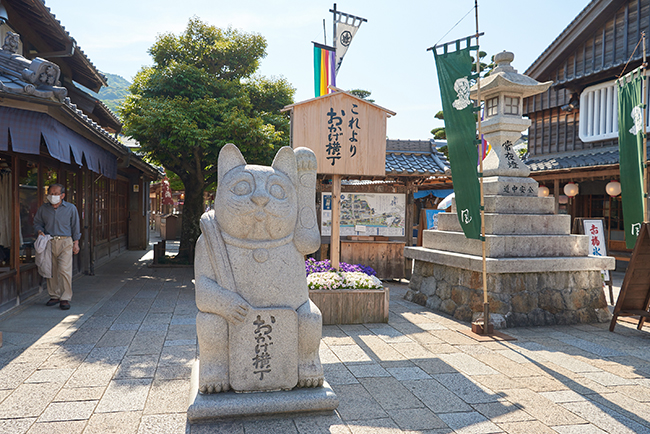Ise Pilgrimages: Oharaimachi’s Historic Revival
Jul 14,2022
Ise Pilgrimages: Oharaimachi’s Historic Revival
Jul 14,2022
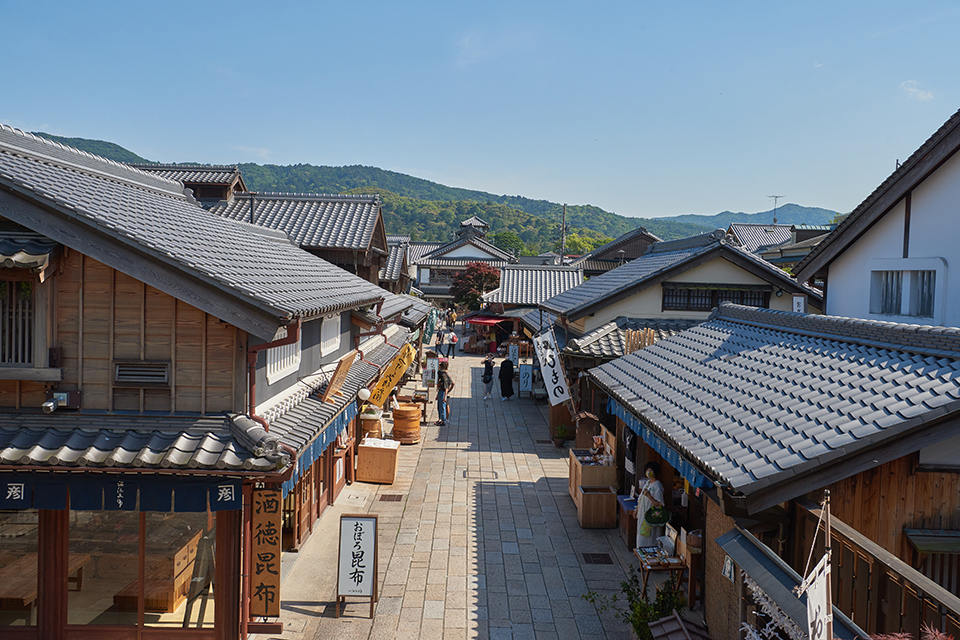

Oharaimachi is the name for the 800-meter-long approach in front of the Uji Bridge that connects to Ise Jingu’s inner shrine. Located about halfway down Oharaimachi is Okage Yokocho, a small district with a townscape reminiscent of the Edo period (1603 to 1868). The sight of tourists wandering the area also brings back memories the bustling times of the past.
The area had been in decline due to a sharp drop in tourist numbers. However, a local, long-established business that had witnessed a great deal of Ise’s history worked to restore the vitality of this district built around a Shinto shrine. In this article, we unravel the history of Ise pilgrimages and relate the story of Oharaimachi’s rebirth.
During the Edo years, many commoners dreamed of making it to Ise Jingu while humming the same tune — “okagedesa, nuketatosa” [a blessing pilgrimage, a slipping away pilgrimage]. The Ise pilgrimage was, for the common people, a once-in-a-lifetime wish.
The pilgrimage craze occurred once every 60 years or so. Swarms of people headed to Ise, many slipping away from home without telling their parents or family members where they were going. The people of Oharaimachi, which until the early Meiji period (1868 to 1912) was lined with the residences of low-ranking priests called onshi, believed that providing segyo — free hospitality — to Ise Jingu pilgrims was a way of improving themselves. As a result, locals offered pilgrims food, money, and sometimes even places to stay.
Oharaimachi was a major destination, attracting more than 2 million visitors a year in the days when people from all over the country made their way to the shrine on foot.
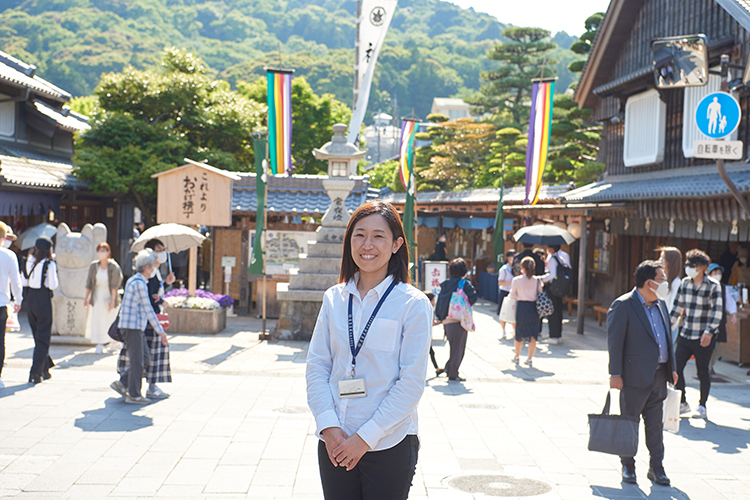
Ikeda Ayako, a public relations manager at Isefuku Co., Ltd.
Oharaimachi’s situation changed dramatically, however, starting in the Meiji period when roads were built and improved and tourism businesses in surrounding areas were developed.
According to Ikeda Ayako, a PR manager at Isefuku Co., Ltd., which manages and operates the Okage Yokocho district, “Visitors to Ise Jingu arriving by car or bus would skip Oharaimachi and head directly to neighboring places like Toba and Shima. Annual visitors to the area plummeted to a mere 200,000 around 1975. The decline was so severe that the area was ridiculed as Japan’s tourist destination with the shortest average stay time.”
Concerned about the state of affairs, the Japanese confectioner Akafuku began taking action to revitalize Oharaimachi. The company believed that restoring the Ise atmosphere that people in the Edo period once clamored for as a spiritual home and bringing back the attentive hospitality to visitors would revive the area. With this belief, the company worked to recreate the townscape in the traditional Ise architectural style.
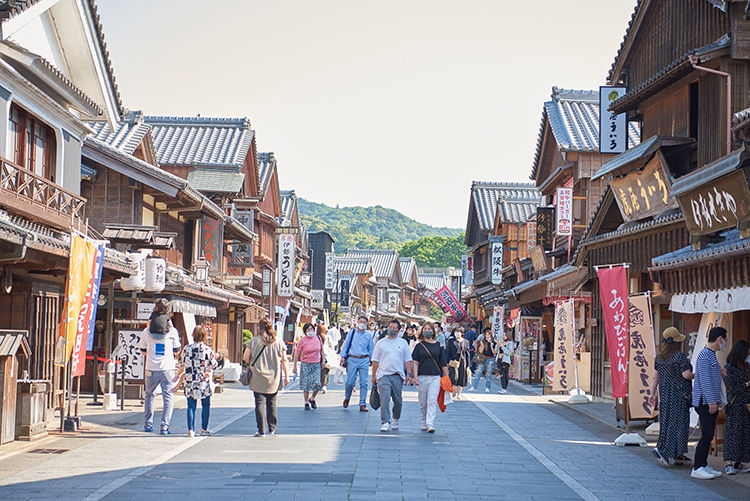
The starting point was Okage Yokocho, in the middle of Oharaimachi and across from the main Akafuku outlet. After it opened in July 1993, the year of the 61st rebuilding of Ise Jingu, tourists gradually returned, with 5.9 million people visiting the area in 2019.
Unlike a theme park, Okage Yokocho is a small district where anyone is free to come and go. Although there is signboard reading “Welcome to Okage Yokocho”, there are no admission fees. The Akafuku head office building that once stood on a corner of Oharaimachi was demolished and the surrounding land was purchased to create the approximately 13,200-square-meter site. The area is now lined with venerable establishments and stores selling Mie specialty goods.

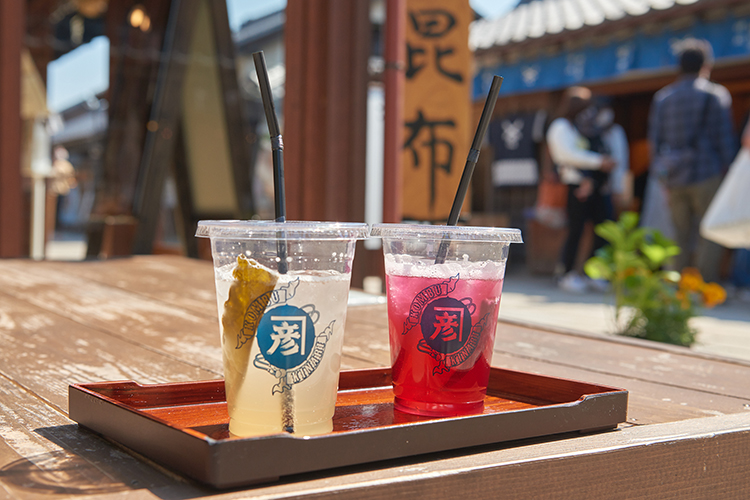
Okage Yokocho Saketoku Kombu, founded in 1912,
specializes in additive-free products that feature the authentic taste of kombu kelp.
Its summer-exclusive ciders made with kombu water are especially popular.
“It’s fun to just visit the stores in Okage Yokocho, but I encourage visitors to look up and take note of the roofs of the buildings.”
The buildings in Okage Yokocho have a traditional Japanese tiled gabled roof, with mountain-shaped gable ends. The main entrance, called tsumairi, is located at one the gabled sides. The main hall of a Shinto shrine has the entrance, called hirairi, on the eaves side. The tsumairi entrance style became widespread because a hirairi entranceway on a regular building was thought to be too imposing. One of the treats of Okage Yokocho is observing the typical Ise architectural style up close.
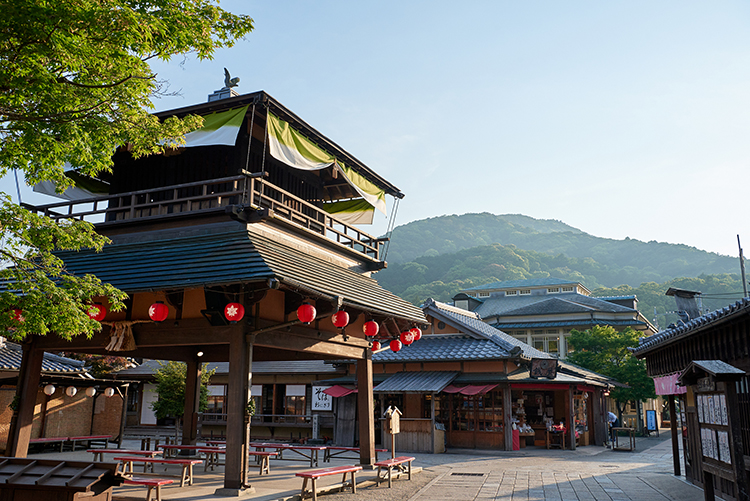
Visitors can enjoy performances by the traditional Japanese drum group Shinon Daiko at the bandstand in Okage Yokocho
The playful spirit of local craftspeople pops up all over the townscape.
For example, the tiles along the eaves of Ise Miya-chu, a company that manufactures and sells Shinto altars and ritual implements, are inscribed with the words from a verse of the famous folk song “Ise Ondo” that reads: “Ise ha Tsu de motsu, Tsu ha Ise de motsu, Owari Nagoya ha shiro de motsu” [Ise is supported by Tsu, Tsu is supported by Ise, and Nagoya of Owari is supported by its castle]. The tiles are arranged cleverly so you can sing “Ise Ondo” as you pass by the building.
There are other roof tile decorations, such as lucky mascots, animals, and shop symbols. You are sure to make new discoveries on every visit.

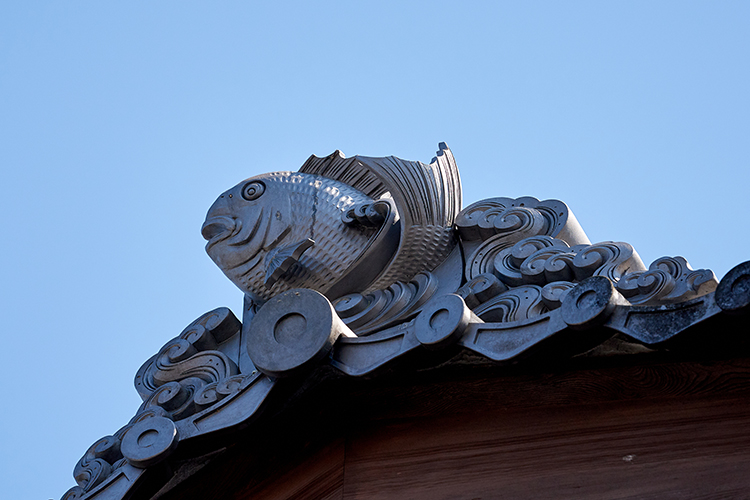
“What people really enjoy are the three monkeys — ‘look intently, ‘listen attentively’, and ‘talk a lot’ — that are a takeoff from the famous three ‘see no evil’, ‘hear no evil’, ‘speak no evil’ monkeys at the Nikko Toshogu shrine. Be sure to look for them on your visit to Okage Yokocho.”
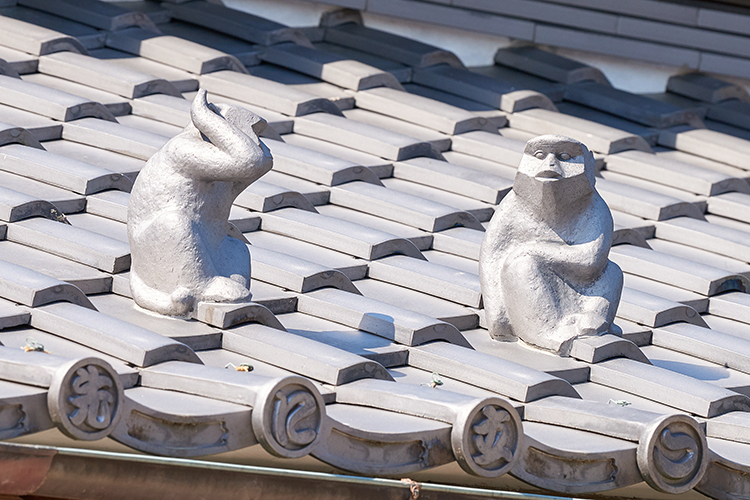
The recreated townscape of Okage Yokocho and its warm hospitality from the Edo period still captivates people and helps revitalize the community even now, nearly 30 years since its opening.
Once derided as Japan’s destination with the shortest average stay, Oharaimachi is regaining its swagger as the main road to Ise Jingu, led by the popularity of Okage Yokocho.
Okage Yokocho and Oharaimachi succeeded in recreating the era when the Ise pilgrimage and sightseeing in the surrounding district was a single experience. They are a rare example of a regional revitalization project that has elevated the value of the community itself.

Iseman, the only saké brewery in Ise, runs a shop near the inner shrine and sells amazake
[a sweet drink made from fermented rice] to quench the thirst of pilgrims
“Our goal is to be Ise’s reception room. By getting visitors to enjoy the history and features of Ise here, we hope to interest people in visiting the surrounding regions as well and help position all of Ise as a spiritual home for Japanese people.”
